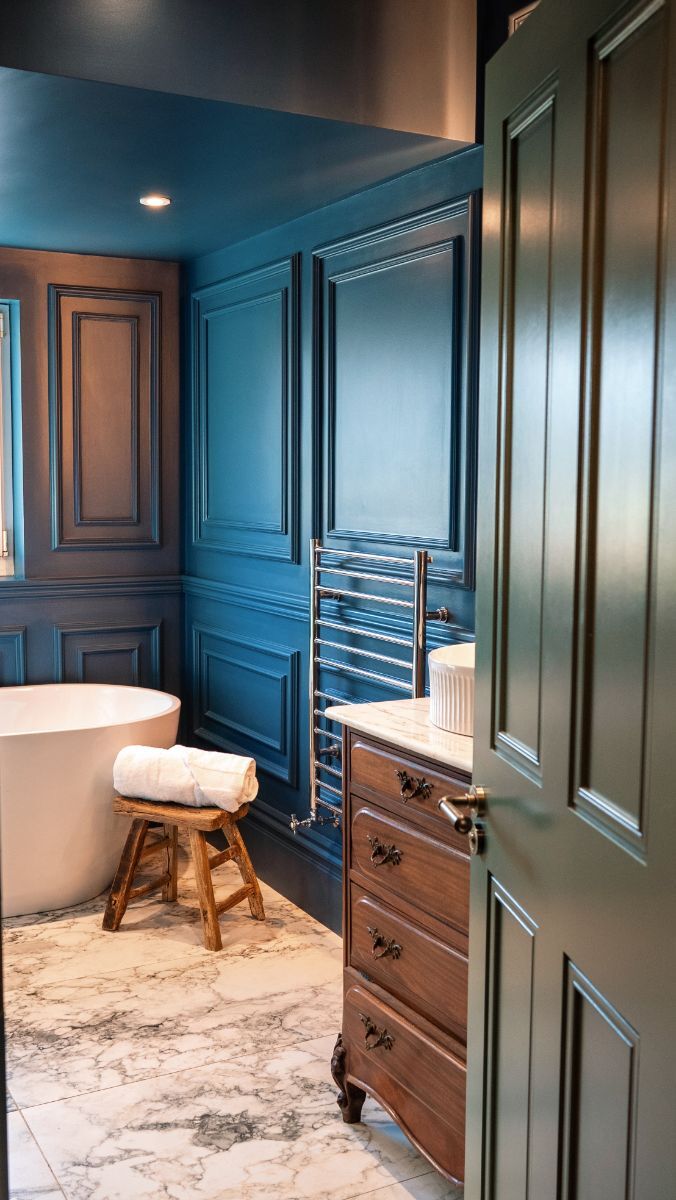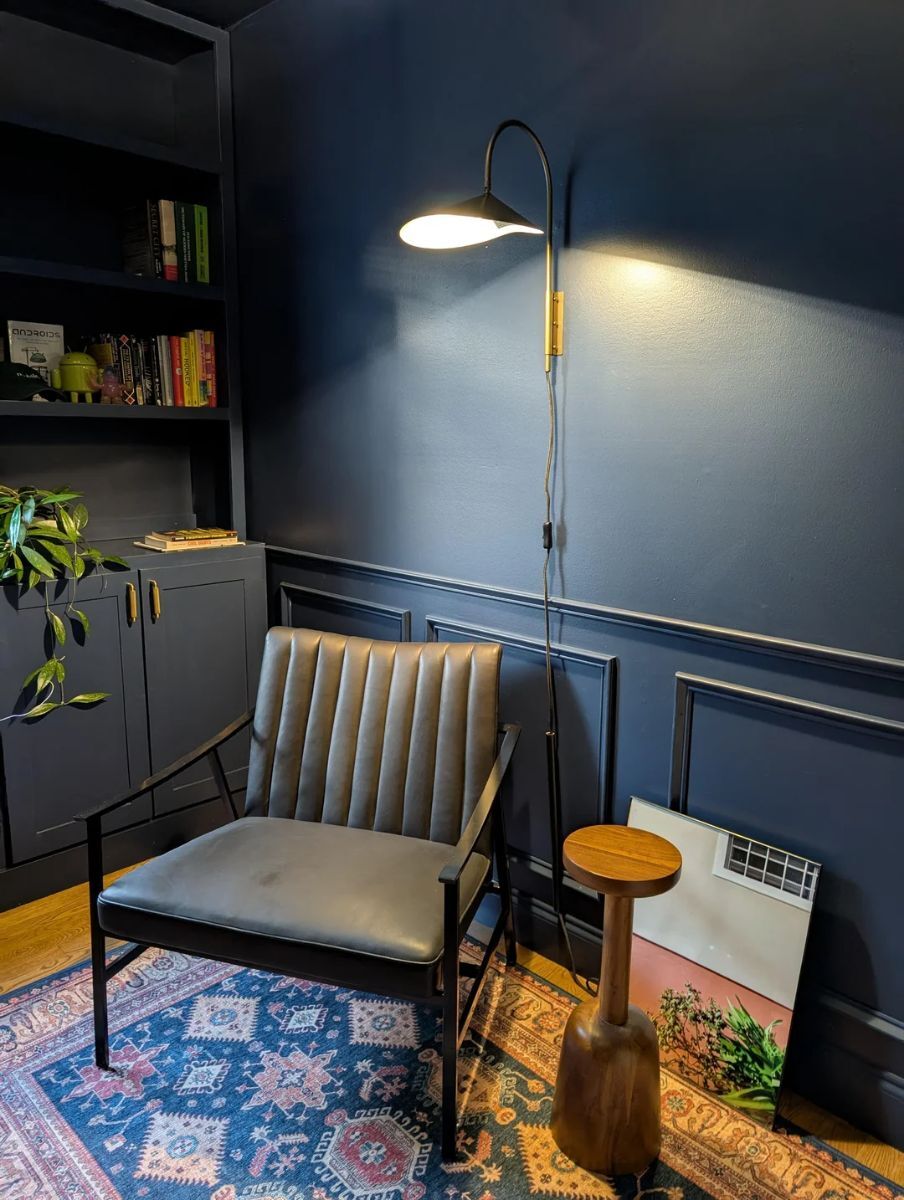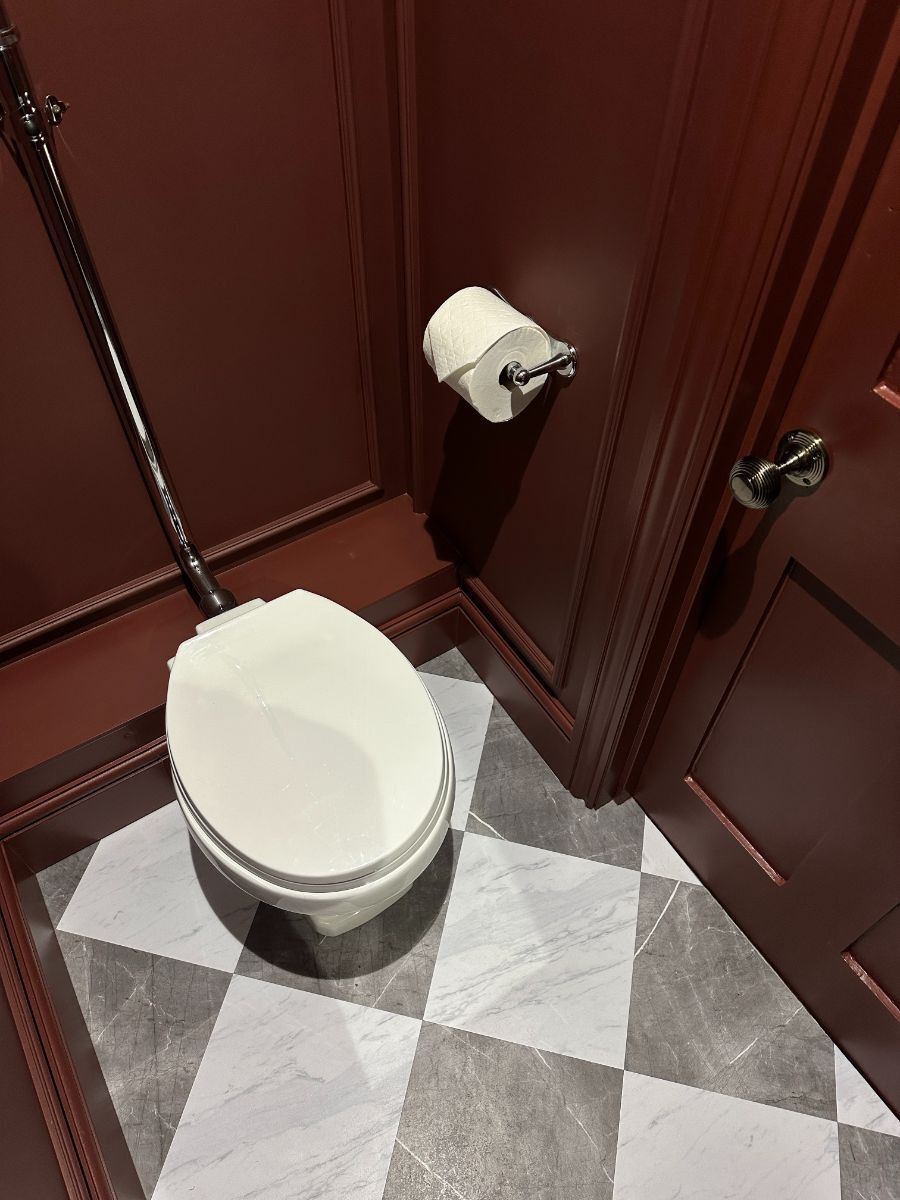Posted by Wall Panels World on 27th Jun 2025
The Best Colour Palettes For Colour Drenching | Visualiser
Colour drenching transforms rooms by painting walls, skirting, architraves, and ceilings in the same colour. Rather than breaking up surfaces with contrasting trim, this technique creates an enveloping, cocoon-like effect that can make spaces feel larger, more sophisticated, or dramatically intimate.
The approach works particularly well with textured surfaces. Shaker wall panels, wainscoting, and fluted panels create depth and interest while maintaining the unified colour scheme that makes drenching so effective.
Colour Drenching in Practice
These real examples show how colour drenching creates different moods and effects across various spaces:
Why Colour Drenching Works
When you remove the visual breaks created by white skirting and architraves, your eye reads the space as one continuous surface. This creates several psychological effects:
- Walls appear to extend further, making rooms feel larger
- Dark colours become more immersive rather than oppressive
- Light colours create a seamless, airy feeling
- Architectural details fade into the background, emphasising furniture and artwork
Before vs After
Traditional
White trim breaks
Drenched
Unified surface
Space feels larger and more cohesive
Colour Psychology in Drenched Spaces
How Colour Intensity Affects Mood
Very Light
Expansive
Light
Calming
Medium
Balanced
Dark
Dramatic
Very Dark
Intimate
Dark Colours
Create intimacy and sophistication. When drenched, they become cocooning rather than cramped. Work best in rooms with good natural light.
Light Colours
Maximise brightness and create airiness. Drenching eliminates visual interruptions, making spaces feel more expansive and serene.
Warm Tones
Feel embracing and comfortable. Drenching amplifies warmth without overwhelming, perfect for living spaces and bedrooms.
Cool Tones
Create calm and focus. When drenched, they become meditative rather than cold, ideal for bathrooms and study spaces.
Try Different Colour Palettes
Use our visualiser to see how different colours transform the same space. Notice how your perception of room size and mood changes with each palette.
Colour Drenching Visualiser
See how a single colour transforms your entire space.
Best Colour Palettes for Drenching
These palettes work consistently well for colour drenching, each creating different atmospheric effects:
How Colour Affects Perceived Space
Same Room, Different Impact
Light Colours
Feels larger
Medium Tones
True to size
Dark Colours
More intimate
Furniture and artwork become more prominent against darker backgrounds
Texture Drenching and Pattern Drenching
Colour drenching works especially well when combined with textured surfaces. The unified colour allows the texture to become the focal point rather than competing with contrasting trim colours.
Texture vs Flat Surfaces
Flat Paint
Uniform surface
Wall Panels and Drenching
Shaker panelling becomes more impactful when drenched because the raised panels create subtle shadows while maintaining colour continuity. The texture adds visual interest without the distraction of white trim breaking up the flow.
PVC wall cladding offers a perfect example of colour drenching in practice. These panels cover entire walls in one colour, creating the seamless effect that makes drenching so effective.
- Fluted panels: Vertical lines draw the eye up, enhancing height
- Wainscoting: Adds traditional detail without visual breaks
- Geometric patterns: Provide contemporary interest within the drenched scheme
- Tongue and groove: Creates subtle linear texture while maintaining unity
Pattern Drenching
Pattern drenching takes the concept further by using the same colour in different finishes or materials. You might combine matte paint on walls with gloss on skirting, or pair painted surfaces with textured wall panels in the same hue.
Effective pattern drenching combinations:
- Matte walls + semi-gloss skirting (same colour, different sheens)
- Painted walls + wood-grained panels (tonal variation within colour family)
- Smooth walls + textured ceiling (unified colour, varied surfaces)
- Solid colour + subtle pattern wallpaper (monochromatic scheme with gentle visual interest)
Practical Implementation
Planning Your Colour Drench
Consider the room's light
North-facing rooms benefit from warm colours, while south-facing rooms can handle cooler tones. Test colours at different times of day to see how they change.
Start with large samples
Paint at least A3-sized samples on different walls. Colour looks different on each surface, and you need to see how it works across the entire room.
Choose the right finish
Eggshell or satin work well for walls, while semi-gloss suits skirting and architraves. The slight sheen difference adds subtle interest while maintaining colour unity.
Plan your order of work
Paint ceiling first, then walls, then skirting and architraves. If installing new panels, fit them before painting begins to ensure perfect colour matching.
Paint Calculations
For a typical 4m × 3m room with 2.4m ceiling height:
Walls (2 coats)
Approximately 3-4 litres
Ceiling (2 coats)
Approximately 1.5-2 litres
Skirting & Architraves
Approximately 0.5-1 litre
Always buy 10-15% extra for touch-ups and future maintenance.
Common Mistakes to Avoid
Testing colour on small patches
Small test patches don't show how the colour will feel when it surrounds you. Always test large areas - at least A3 size - on multiple walls.
Ignoring lighting changes
Colours shift dramatically between natural and artificial light. View your test colours in morning, afternoon, and evening light before deciding.
Forgetting the ceiling
A white ceiling breaks the drenching effect. Use the same colour or a lighter tint (20-30% white added) to maintain the enveloping feeling.
Choosing colours without considering furniture
Drenched rooms make furniture and artwork more prominent. Ensure your existing pieces will work with your chosen colour, or plan to update them.
Creating Your Perfect Drenched Room
Colour drenching transforms spaces by eliminating visual breaks and creating a cohesive, enveloping atmosphere. Whether you choose sophisticated neutrals, moody darks, or fresh lights, the key is committing fully to the concept.
The technique works particularly well with textured surfaces like wall panels, where the unified colour allows the texture to create visual interest without competing elements. This makes rooms feel more spacious, sophisticated, and intentionally designed.
Remember to test thoroughly, consider your lighting, and plan the practical aspects carefully. When done well, colour drenching creates rooms that feel both dramatic and comfortable - spaces that truly reflect a confident design choice.
Ready to Start Your Colour Drenching Project?
Explore our range of wall panels and panelling kits that work beautifully with colour drenching techniques.




